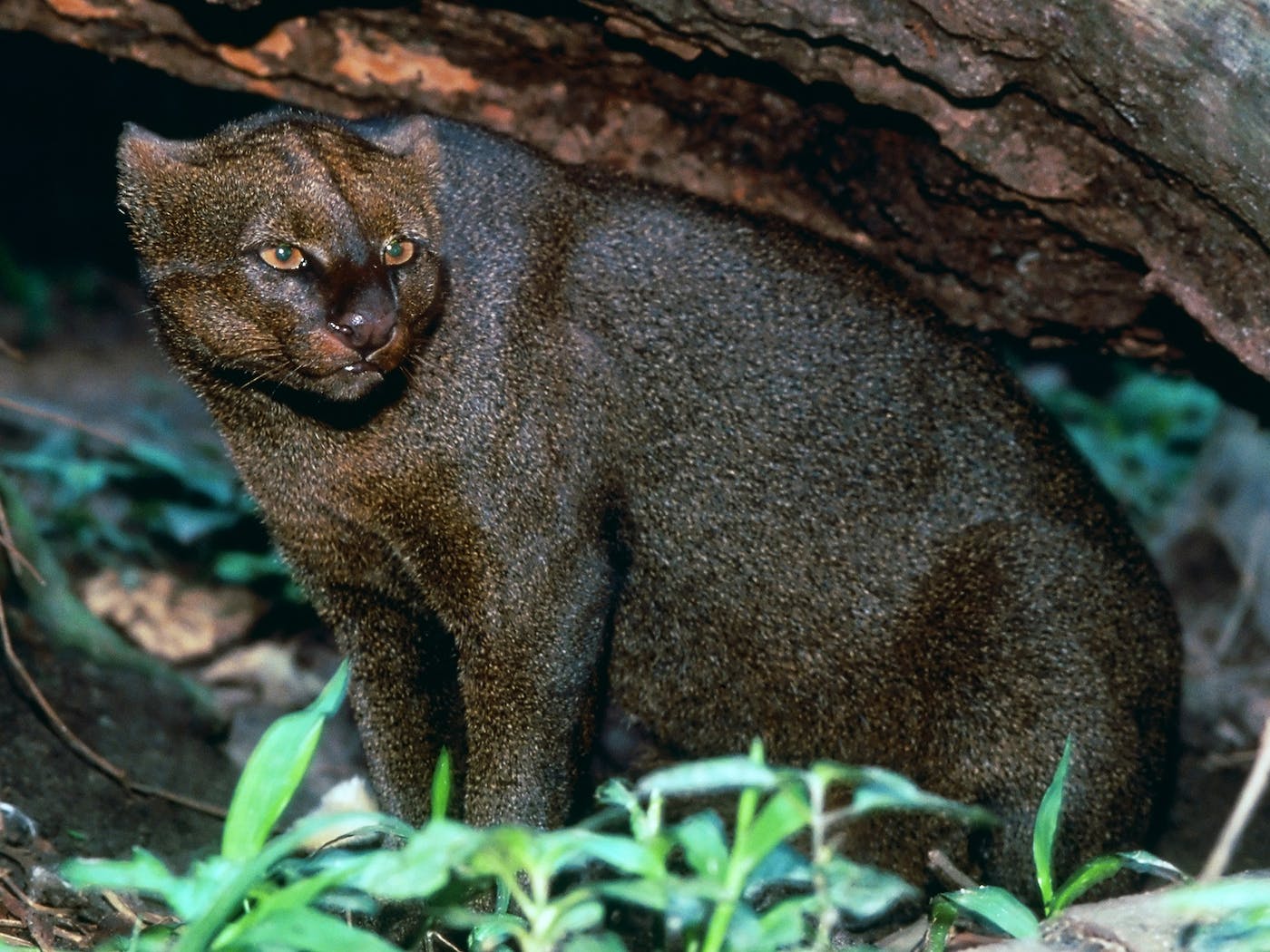
The jaguarundi (jaguarondi) is a fascinating species of wild cat that bears a resemblance to a large otter in terms of its appearance, earning it the nickname “otter cat.” Native to the southern regions of North America, Mexico, and South America, the jaguarundi thrives in a diverse range of habitats including tropical rainforests, savannas, semi-arid areas, woodlands, and swamps. This adaptable feline species encompasses eight distinct subspecies.
Sadly, the jaguarundi population in the wild has been declining for various reasons. Farmers often target jaguarundis due to their predation on poultry. Furthermore, these cats frequently become ensnared in traps set for other animals. The loss of their natural habitat also poses a significant threat to the jaguarundi population. Despite these challenges, the jaguarundi is not currently classified as an endangered species.
The jaguarundi, despite being classified as a small cat, possesses unique physical characteristics. It typically stands at a height of about 12 inches at the shoulder, measuring between 21 to 30 inches in length, and weighing approximately 10 to 20 pounds. Although compact in size, this species displays remarkable agility and adaptability.
The body of the jaguarundi is adorned with fur that exhibits a striking feature—uniform coloration. The color of their fur can vary depending on the habitat they inhabit. In some regions, it may appear reddish, while in others, it can be grayish or black to brownish. Interestingly, individuals residing in dense forests tend to possess darker fur, which helps them blend seamlessly into their surroundings.
With its elongated and slender physique, the jaguarundi showcases a small head, short legs, and a distinctive tail that is almost as long as its entire body. This characteristic tail assists the jaguarundi in maintaining balance while navigating through various terrains.
Unlike many other South American cat species, the jaguarundi is predominantly a ground-dwelling creature. It spends the majority of its time on the ground, seeking refuge in dense vegetation or heavy bushes. This behavior allows them to remain hidden and protected while hunting or resting.
While the jaguarundi favors the ground, it exhibits impressive climbing abilities. When the need arises, such as for rest or to evade threats, it can scale trees with agility and grace. This adaptability allows the jaguarundi to take advantage of arboreal habitats and explore different levels of the forest ecosystem.
Additionally, the jaguarundi is a proficient swimmer. It gravitates toward habitats that provide ample water sources. This affinity for aquatic environments not only contributes to its survival but also broadens its range of potential prey and expands its overall habitat options.
The jaguarundi, being primarily a diurnal creature, is most active during the day. It engages in daily excursions over large distances as it searches for its main source of sustenance—food.
As a carnivore, the jaguarundi’s diet consists of a variety of meat-based prey. Its menu includes fish, frogs, birds, small mammals, lizards, and other reptiles. This diverse diet reflects its adaptability and ability to exploit different food sources available within its habitat.
Impressively, the jaguarundi is capable of leaping up to 6.5 feet in the air, enabling it to catch flying birds. This skill, combined with its agility and quick reflexes, allows it to capitalize on aerial opportunities for securing prey.
The jaguarundi is known to be a solitary and territorial creature. Male individuals establish territories spanning an extensive range of approximately 45 to 56 square miles. In contrast, females require smaller territories, usually ranging between 8 to 11 square miles. However, when the territories of a male and female overlap, they may begin to form pairs and engage in shared living arrangements.
Communication plays a vital role in the social dynamics of the jaguarundi. These vocal animals employ a repertoire of 13 distinct sounds for various forms of communication. Their vocalizations include purring, whistling, screaming, chattering, yapping, and even producing bird-like “chirping” sounds. This extensive range of vocalizations facilitates interactions within their species, enabling them to convey various messages and maintain social connections.
The reproductive behavior of jaguarundis is intriguing. They typically mate twice a year, with the breeding season occurring at specific intervals. The pregnancy period for females lasts approximately 70 to 75 days, culminating in the birth of one to four cubs.
When it is time to give birth, female jaguarundis seek out hidden dens in locations such as hollow trees, fallen logs, or dense vegetation. These secluded spots provide a secure and sheltered environment for the birth and early development of the cubs.
At birth, jaguarundi cubs possess spotted fur, which adds to their adorable appearance. However, these spots gradually fade away as the cubs age, usually disappearing by the time they reach three months old. By the age of 10 months, the cubs become proficient hunters, acquiring the skills necessary to secure their own prey.
Around the age of 22 to 24 months, jaguarundi cubs transition into a solitary lifestyle. They become independent and embark on their individual journeys in search of territories to claim as their own. The age of sexual maturity for jaguarundis typically ranges between two to three years, marking the point at which they are capable of reproducing and continuing the life cycle of the species.
The lifespan of a jaguarundi can vary depending on whether it resides in the wild or in captivity. In the wild, these feline creatures can survive for approximately 12 to 15 years, adapting to the challenges and demands of their environment. On the other hand, jaguarundis in captivity often have a longer lifespan, with individuals reaching between 20 to 23 years of age, benefiting from the care and protection provided within a controlled setting.









